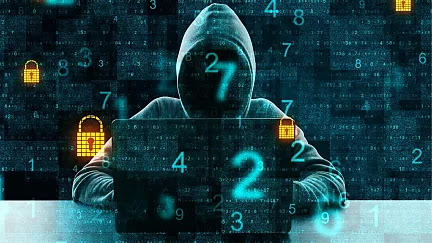How Hackers Stole $600 Million from the Ronin Network
The world of cryptocurrency has revolutionized digital finance, but it also brings new security risks. One of the most shocking cyberattacks in blockchain history occurred in March 2022, when hackers infiltrated the Ronin Network, a blockchain powering the popular crypto-based game Axie Infinity. This incident exposed vulnerabilities in decentralized finance (DeFi) and emphasized the need for strong cybersecurity frameworks. With cyber threats evolving, professionals must stay ahead by upskilling through a Best Cyber Security Course in India to protect digital assets from such breaches.
What Is the Ronin Network?
The Ronin Network is a blockchain designed to support Axie Infinity, an online game where users buy, trade, and battle using digital creatures called Axies. Due to high Ethereum transaction fees, Ronin was developed as a sidechain to facilitate faster and cheaper transactions.
However, while Ronin improved efficiency, it also introduced security weaknesses that cybercriminals ultimately exploited.
The Attack: How Hackers Stole $600 Million
On March 23, 2022, hackers infiltrated the Ronin Network by exploiting vulnerabilities in its validator nodes, which were responsible for verifying transactions. The attack involved the following key steps:
1. Compromising Private Keys
Ronin operates on a Proof-of-Authority (PoA) consensus mechanism, where a limited number of validator nodes approve transactions. Hackers gained access to private keys belonging to five out of the nine validator nodes, giving them control over the network.
2. Executing Unauthorized Transactions
Once inside, the hackers initiated two unauthorized withdrawals, siphoning off:
173,600 Ethereum (ETH)
25.5 million USDC (stablecoin)
The total value of the stolen funds exceeded $600 million, making this one of the largest crypto heists ever recorded.
3. Escaping Without Detection
The attack went undetected for six days until an Axie Infinity user reported issues withdrawing funds. By then, the hackers had laundered a significant portion of their loot through mixing services and crypto exchanges, making recovery even more difficult.
Why Was Ronin Vulnerable?
Several security flaws allowed the attackers to pull off this massive breach:
1. Centralized Validator Nodes
With only nine validators, hacking five was enough to take control of the network. This low-security threshold made Ronin an easy target.
2. Weak Access Controls
Ronin’s validators did not require multiple approvals for large transactions. A stronger multi-signature protocol could have prevented unauthorized access.
3. Lack of Real-Time Monitoring
The breach went unnoticed for nearly a week, highlighting the need for continuous security audits and real-time threat monitoring in DeFi networks.
The Aftermath: Ronin’s Response
Following the breach, Ronin Network and Sky Mavis (Axie Infinity's developer) took several damage control measures:
1. Halting Transactions
Ronin paused all transactions immediately upon discovering the breach, preventing further withdrawals.
2. Strengthening Security Measures
The company increased its validator nodes to improve decentralization and enhanced authentication protocols to prevent unauthorized access.
3. Reimbursing Users
To compensate affected users, Ronin received a financial bailout from investors and launched a reimbursement program to restore lost funds.
4. Collaborating with Law Enforcement
Sky Mavis partnered with crypto security firms, regulators, and law enforcement agencies to track stolen funds and identify the perpetrators.
Lessons Learned: Strengthening Blockchain Security
The Ronin attack exposed major vulnerabilities in DeFi security, emphasizing the urgent need for better cybersecurity measures. Some key lessons include:
1. Increase Decentralization
Blockchain projects must diversify validator nodes and adopt multi-signature authentication to prevent centralized risks.
2. Implement Multi-Factor Authentication
Using multi-factor authentication (MFA) and strong private key management can help safeguard blockchain transactions from unauthorized access.
3. Invest in Smart Contract Security
Regular security audits and bug bounty programs ensure smart contracts remain secure and tamper-proof.
4. Conduct Real-Time Monitoring
Organizations must deploy AI-driven threat detection systems that provide instant alerts for suspicious activity.
5. Train Cybersecurity Experts
Blockchain security is complex, and companies need skilled professionals to protect their platforms. Enrolling in a Cyber Security Classes in India can equip individuals with advanced threat detection and blockchain security expertise to prevent similar attacks.
Conclusion
The Ronin Network hack serves as a critical reminder that blockchain and DeFi projects must prioritize cybersecurity. Despite their promise of decentralization and financial freedom, these networks are not immune to cyber threats.
The $600 million breach underscores the need for advanced security protocols, decentralized risk management, and cybersecurity education. As crypto-based platforms continue evolving, companies must invest in strong security frameworks, proactive monitoring, and expert-led cybersecurity strategies.
With cybercriminals growing increasingly sophisticated, individuals and businesses must adapt to new security challenges. By learning from past incidents like Ronin, the industry can build more resilient and secure blockchain ecosystems to protect digital assets and user trust in the long run.




Comments
Post a Comment